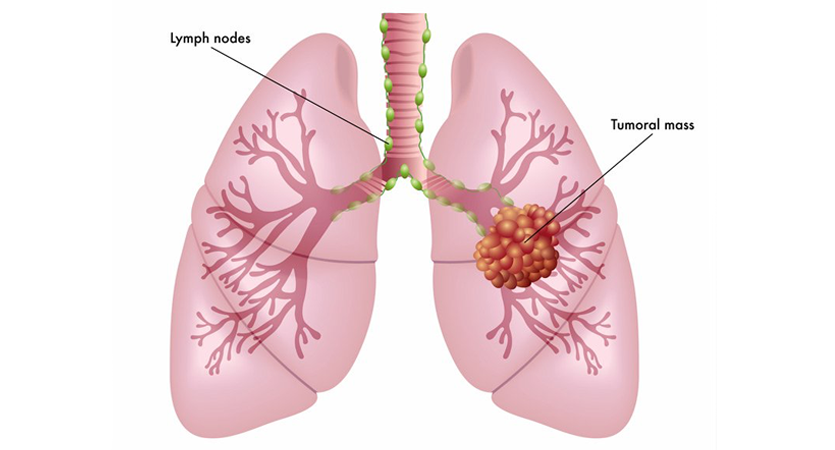What are the Different Stages of Esophageal Cancer?
Esophageal cancer is a formidable disease that affects the esophagus, the hollow tube that carries food and liquids...
+919999461292
MBBS | DNB (General Surgery, Gold Medalist) | DNB (Thoracic Surgery, Gold Medalist)
Thoracic & Lung Transplant Surgeon | Medanta – The Medicity, Gurugram

MBBS | DNB (General Surgery, Gold Medalist) | DNB (Thoracic Surgery, Gold Medalist)
Thoracic & Lung Transplant Surgeon | Medanta – The Medicity, Gurugram

A pneumothorax is a medical condition characterized by the presence of air or gas in the pleural space, the area between the lung and the chest wall. This accumulation of air causes the affected lung to collapse partially or completely, leading to breathing difficulties and potential complications. Pneumothorax can occur spontaneously, as a result of trauma or underlying lung conditions, and understanding its causes, symptoms, diagnosis, and treatment is essential for prompt and effective management.


To understand pneumothorax, it’s essential to grasp the anatomy of the pleural space. The lungs are surrounded by a thin, double-layered membrane called the pleura. The visceral pleura covers the outer surface of the lungs, while the parietal pleura lines the inner surface of the chest wall. The pleural space lies between these two layers and normally contains a small amount of pleural fluid, which acts as a lubricant, allowing the lungs to move smoothly during breathing.
There are several types of pneumothorax based on their underlying cause:
– Primary Spontaneous Pneumothorax: This type occurs in individuals without any known underlying lung disease. It typically affects young, tall, thin individuals and is believed to result from the rupture of small, air-filled sacs called blebs or bullae that are present in the lung tissue.
– Secondary Spontaneous Pneumothorax: This type occurs in individuals with pre-existing lung conditions, such as chronic obstructive pulmonary disease (COPD), cystic fibrosis, or interstitial lung disease. In these cases, the lung tissue is weakened, making it more susceptible to the development of a pneumothorax.
– Traumatic Pneumothorax: This type is caused by chest trauma, such as a fractured rib or penetrating injury that allows air to enter the pleural space.
– Tension Pneumothorax: This is a severe and life-threatening form of pneumothorax that occurs when air accumulates in the pleural space and cannot escape, leading to increased pressure on the affected lung and shifting of the heart and other structures within the chest.
The symptoms of pneumothorax can vary depending on the degree of lung collapse and the underlying cause. Common signs and symptoms may include:
– Sudden onset of sharp or stabbing chest pain: The pain is often felt on one side and may worsen with deep breathing or coughing.
– Shortness of breath: Breathing may become rapid and shallow due to the compromised lung function.
– Cyanosis: Bluish discoloration of the skin and lips due to decreased oxygen levels in the blood.
– Tachycardia: Increased heart rate as the body tries to compensate for decreased oxygenation.
– Tachypnea: Increased respiratory rate in response to decreased lung function.
In tension pneumothorax, the symptoms may be more severe and can lead to a medical emergency, with the affected individual experiencing severe respiratory distress, hypotension, and shock.


The diagnosis of pneumothorax typically involves a combination of clinical evaluation, medical history, and imaging studies. Physical examination may reveal decreased breath sounds on the affected side and hyperresonance on percussion (a hollow sound) over the chest.
Imaging studies are crucial for confirming the diagnosis and assessing the extent of lung collapse. Chest X-rays and computed tomography (CT) scans are commonly used to visualize the presence of air in the pleural space and determine the size and location of the pneumothorax.
The management of pneumothorax depends on several factors, including the severity of symptoms, the size of the pneumothorax, the underlying cause, and the overall health of the affected individual. Treatment options include:
– Observation: Small and asymptomatic pneumothoraces may be managed with observation, especially in individuals without underlying lung disease. The body may reabsorb the air over time, allowing the lung to re-expand naturally.
– Chest Tube Insertion (Thoracostomy): For larger or symptomatic pneumothoraces, a chest tube may be inserted into the pleural space to drain the air and allow the lung to re-expand. This is usually performed under local anesthesia and is connected to a drainage system.
– Needle Aspiration: In some cases, a small pneumothorax can be managed with needle aspiration, where a needle is inserted into the pleural space to remove the air.
– Pleurodesis: For recurrent pneumothorax or as a preventive measure for individuals with a history of spontaneous pneumothorax, pleurodesis may be performed. This procedure involves inducing inflammation and scarring of the pleural layers, which helps to prevent future air leaks.
– Surgical Repair (VATS or Thoracotomy): In certain cases, especially if the pneumothorax is recurrent or persistent, surgical intervention may be necessary to repair the lung tissue and prevent future occurrences. Video-assisted thoracoscopic surgery (VATS) or thoracotomy may be used for this purpose.
The prognosis for pneumothorax depends on the underlying cause, the size of the pneumothorax, and the promptness of treatment. In general, uncomplicated and promptly managed pneumothoraces have a good prognosis, with the lung re-expanding and the individual recovering fully. However, larger or tension pneumothoraces can be life-threatening and require immediate medical attention.
While some types of pneumothorax, such as traumatic pneumothorax, may not be preventable, there are certain measures that can reduce the risk of primary spontaneous pneumothorax in susceptible individuals:
– Smoking Cessation: Avoiding smoking or quitting smoking reduces the risk of lung damage and the development of blebs or bullae.
– Regular Follow-up: Individuals with underlying lung conditions, such as COPD or cystic fibrosis, should follow their healthcare provider’s recommendations for regular check-ups and management of their lung health.
Tension pneumothorax is a medical emergency that requires immediate action. If an individual exhibits signs of respiratory distress, hypotension, and shock, it is essential to seek emergency medical attention. In the field or healthcare setting, tension pneumothorax is managed by inserting a needle or chest tube to release the trapped air and relieve the pressure on the affected lung.
Esophageal cancer is a formidable disease that affects the esophagus, the hollow tube that carries food and liquids...
Esophageal cancer is a formidable and often challenging disease that affects the esophagus, the muscular tube that carries...
Esophageal cancer is a challenging and potentially life-threatening condition that requires timely diagnosis and appropriate treatment. When esophageal...
Esophageal cancer is a serious and potentially life-threatening disease that affects the esophagus, the muscular tube that carries...
Esophageal cancer is a formidable adversary that can silently develop within the esophagus, the muscular tube connecting the...
Esophageal cancer is a serious and potentially life-threatening condition that affects the esophagus, the muscular tube responsible for...
WhatsApp us